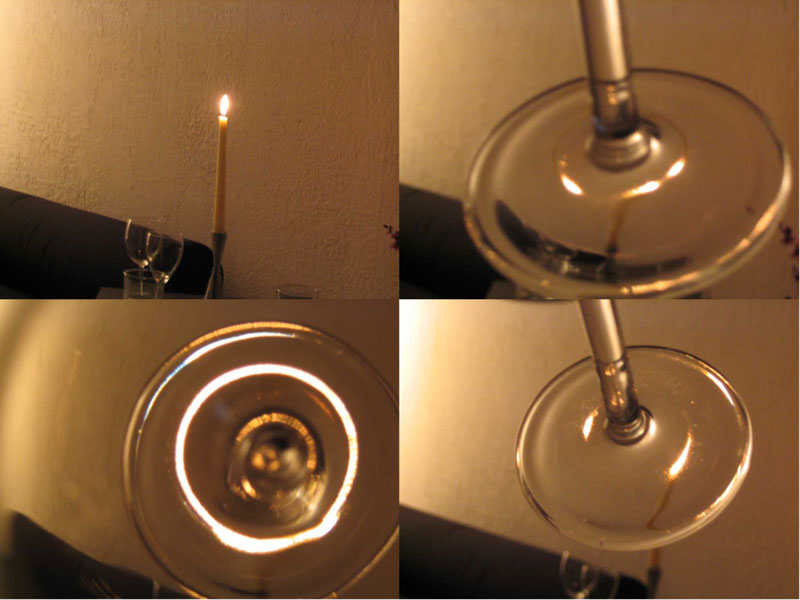We cannot see one of the universe’s primary constituents: dark matter. The reason is simple: it's dark. But we can infer where it is located from observations of distant galaxies because of a key property of light, namely that it does not always travel in straight lines. For example, galaxies and clusters of galaxies deflect, or “bend,” light rays from these far-off objects as they pass close by, focusing the rays like a lens does. In some cases the deflection is large enough that it is possible for multiple images of the same background source to appear. This effect is known as “gravitational lensing” and is used by researchers at KIPAC to map out the distribution of mass – dark and luminous – in clusters and galaxies.
By measuring the time delays between the multiple images of a flickering quasar, we can even measure the distance to the lens and hence the overall scale of the universe, otherwise known as Hubble's constant. KIPAC scientists are currently measuring the distances to several of these rare objects in collaboration with the COSMOGRAIL team, using data from the Hubble Space Telescope (among others). We are also preparing to extend this investigation to much larger samples, hundreds or even thousands of lenses, using the Dark Energy Survey and, later, the Large Synoptic Survey Telescope. With enough data points, researchers should be able to measure the effects of the dark energy.
Multiple image systems - strong lenses - are rare events. The more lenses we have, the more science we can do, and so KIPAC researchers are engaged in various searches for more gravitational lenses. You can help too, at the citizen science project Space Warps. LSST will discover many thousand new lenses, presenting a significant data mining challenge.
Gravitational lensing effects are detectable in all distant galaxies: their images are all slightly distorted as they are lensed by all the massive structures in the universe lying between us and them. This weak lensing signal will be precisely measured using DES and LSST, allowing us to learn about the growth of structures in the universe, and the dark energy driving the expansion of the space between them. KIPAC scientists are engaged in trying to make these measurements as accurately as possible, understanding the telescope and camera hardware, and writing analysis software to extract the maximal amount of information from the data.
Click the images below to see a larger version

A model gravitational lens. The way light is refracted by this wineglass base is almost the same as that seen due to massive galaxies and clusters: the same patterns of two and four images, distorted arcs and "Einstein Rings" are all seen when a distant background galaxy or quasar lies almost exactly behind the foreground gravitational lens.

Three gravitational lenses, found in the HST/AEGIS survey. The high resolution images from HST allow accurate measurements of the mass in these elliptical lens galaxies to be made.

The four-image lens B1608, observed with HST. The background object is a flickering AGN, which was monitored at radio wavelengths - the time delays between images A, B, C and D are very accurately known, making B1608 a good system for measuring Hubble's constant.

B1608 provides very competitive constraints on Hubble's constant, the dark energy density, and the dark energy equation of state parameter w (in a joint analysis with the WMAP5 CMB data). The fourth parameter shown describes the unknown additional mass lying along the line of sight - improving our understanding of this is an active topic of research at KIPAC.






